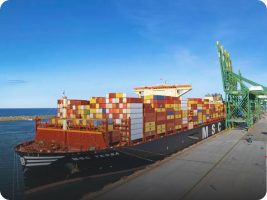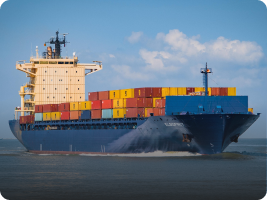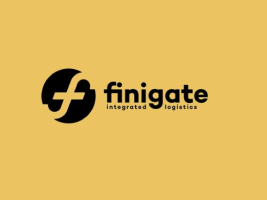Solution
Dangerous Goods
Dangerous Goods (DG) or Hazardous Materials (Hazmat) shipping is a highly specialized logistics service for substances and articles that pose a risk to health, safety, property, or the environment during transportation. These goods, characterized by their explosive, flammable, toxic, infectious, corrosive, or radioactive nature, are strictly regulated by international codes. In compliance with the IMDG Code (sea), IATA DGR (air), and other authorities, DG is classified into 9 classes.
Common product types include:
-
Class 1: Explosives.
-
Class 2: Gases.
-
Class 3: Flammable Liquids.
-
Class 4: Flammable Solids; Spontaneously Combustible; Dangerous When Wet.
-
Class 5: Oxidizing Substances & Organic Peroxides.
-
Class 6: Toxic & Infectious Substances.
-
Class 7: Radioactive Material.
-
Class 8: Corrosives.
-
Class 9: Miscellaneous Dangerous Substances & Articles.
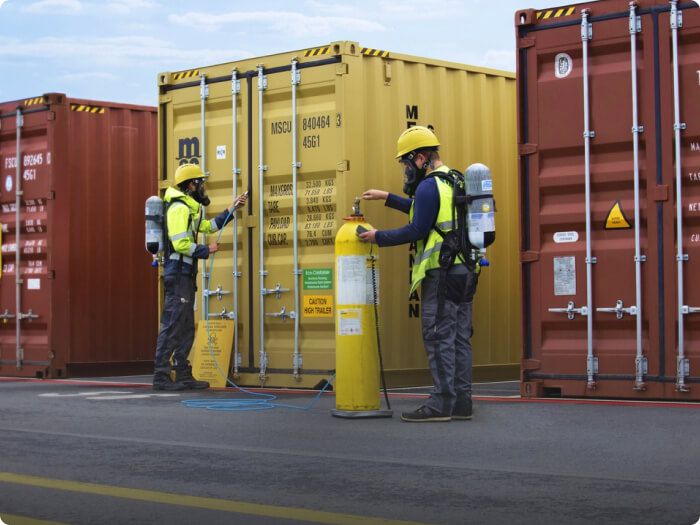
Policies & Regulations
DG shipping is one of the most heavily regulated fields globally, demanding utmost expertise and operational precision from the freight forwarder.
-
01
Strict Compliance:
Mandatory adherence to all applicable international and national regulations, including IMDG (sea), IATA (air), ADR (road). Any misdeclaration, non-declaration, or false declaration can result in severe penalties, cargo seizure, and criminal liability.
-
02
Proper Classification & Identification:
Trained specialists must accurately determine the DG Class, UN Number, Packing Group, and Proper Shipping Name based on the material's Safety Data Sheet (SDS/MSDS).
-
03
Packaging Requirements:
Must use UN-certified and performance-tested packaging compatible with the hazardous material. Packaging must be correctly filled, secured, and sealed to withstand the rigors of transport.
-
04
Complete Documentation:
Preparation of accurate and complete shipping documents is critical. This includes the Dangerous Goods Declaration (DGD), MSDS/SDS, and a DG Cargo Approval from the carrier. All information must be consistent across documents, packaging, and labels.
-
05
Marking, Labeling & Placarding:
Packages must be clearly and correctly marked with the proper UN number and labeled with hazard class labels. Containers and vehicles must display large, standardized placards to warn handlers and guide emergency response.
-
06
Storage & Segregation:
Different classes of DG that are incompatible must be strictly segregated during storage and loading to prevent dangerous chemical reactions.
Our Solutions
Navigating the complexities of DG shipping requires an expert partner. We act as your "Compliance & Safety Guardian," providing a zero-error, end-to-end solution to ensure your hazardous materials reach their global destination safely and legally.
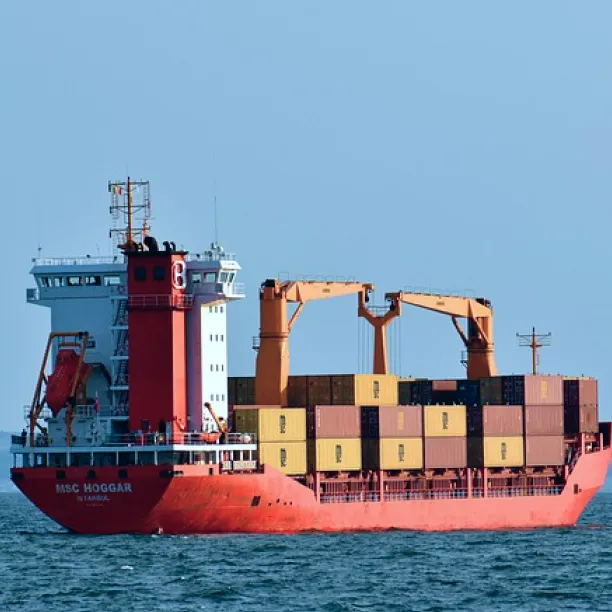
-
Certified DG Specialist Team:
Our team includes IATA and IMDG certified Dangerous Goods Officers (DGO). They provide end-to-end expertise—from classification and packaging advice to document preparation and review—ensuring 100% compliance from start to finish.
-
End-to-End Compliance Management:
We manage the entire compliance chain: MSDS review, commodity classification, UN number determination, recommending certified packaging suppliers, preparing and auditing DG documentation, and booking space with DG-approved carriers.
-
Secure Storage & Handling:
We partner with warehouses licensed to store DG, featuring dedicated areas that meet strict fire safety and segregation rules. All operations are handled by trained personnel to ensure integrity during storage.
-
Precise Emergency Response Support:
We ensure all shipments are accompanied by accurate Emergency Response Information. In the event of an incident, first responders have immediate access to critical handling instructions, mitigating risk effectively.
-
Customized Training & Support:
Beyond our services, we offer customized training sessions for your team on DG fundamentals. This empowers you to understand compliance requirements from the source, avoiding delays and risks associated with unfamiliarity.





